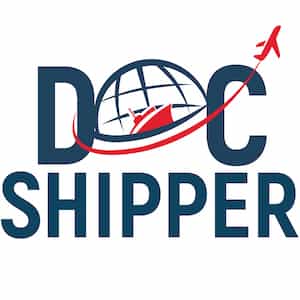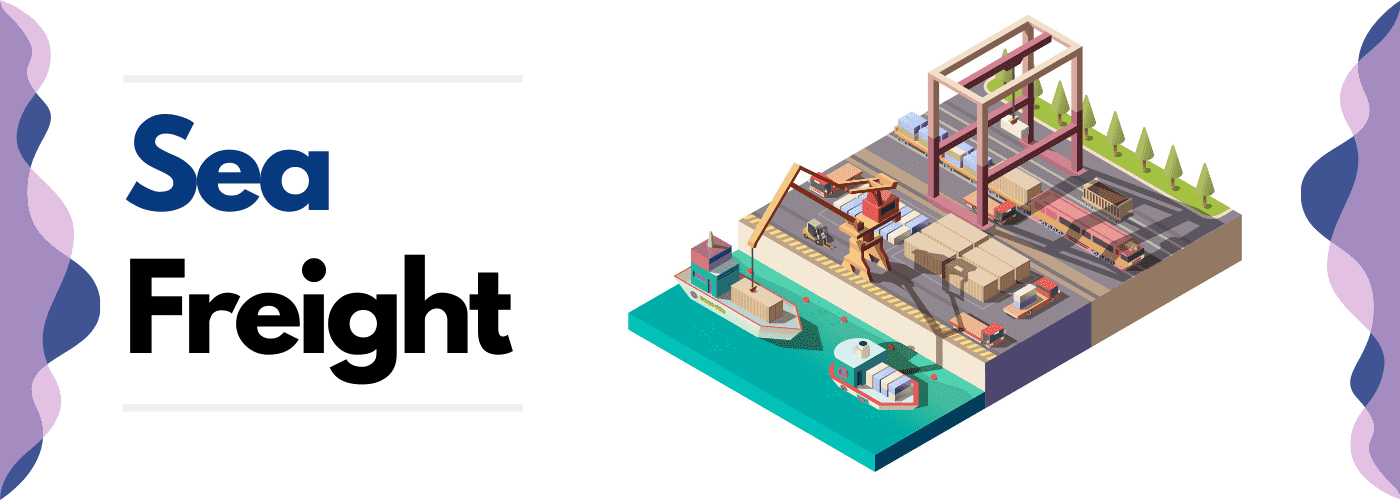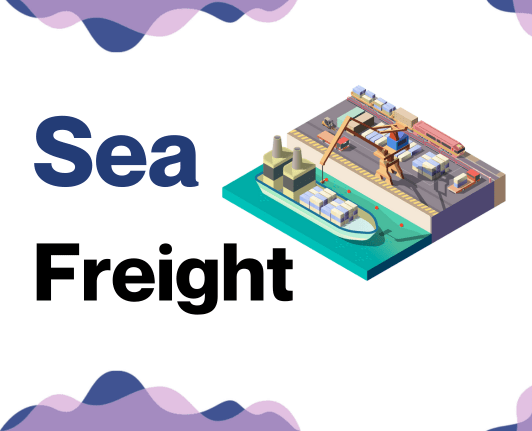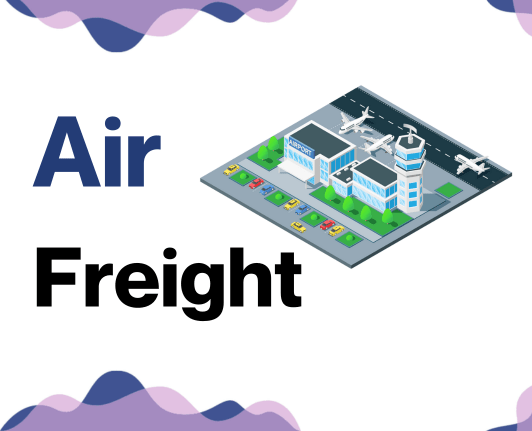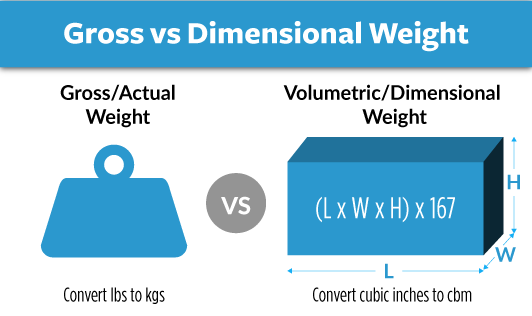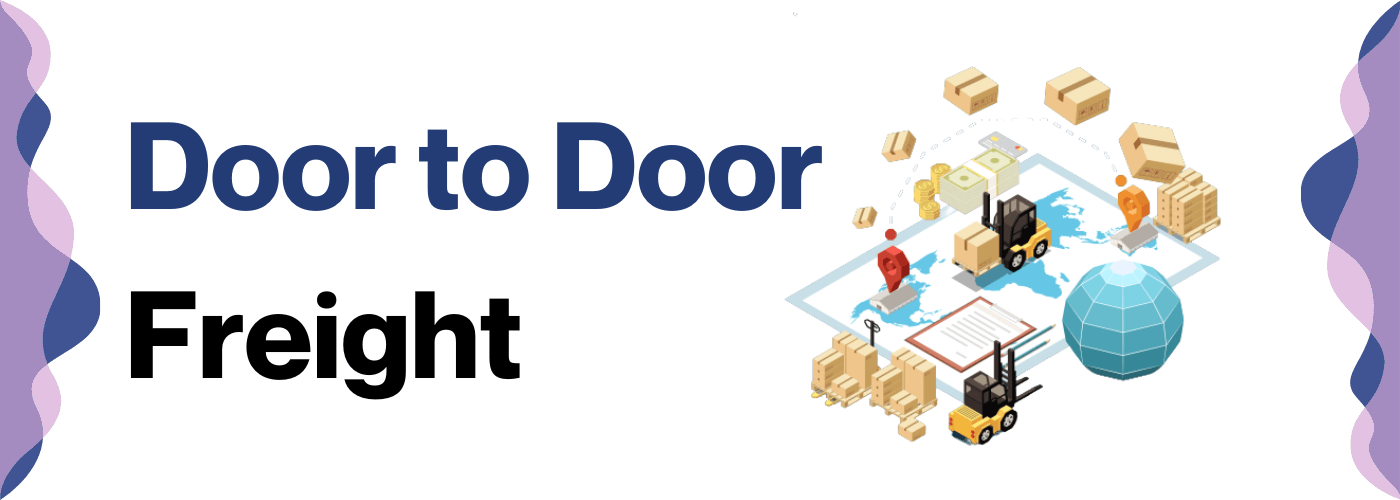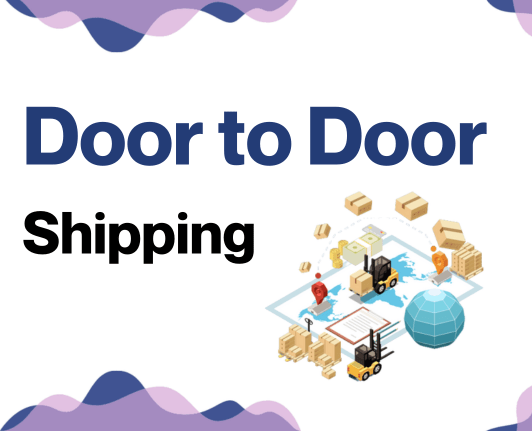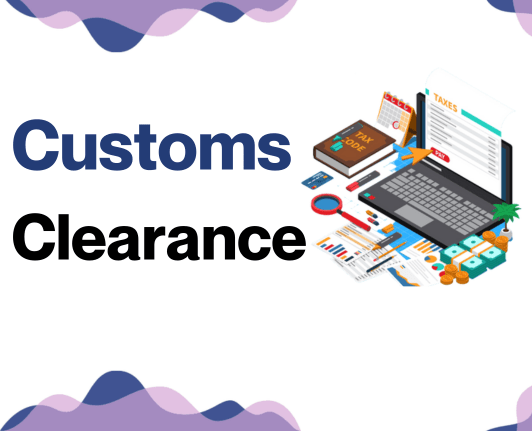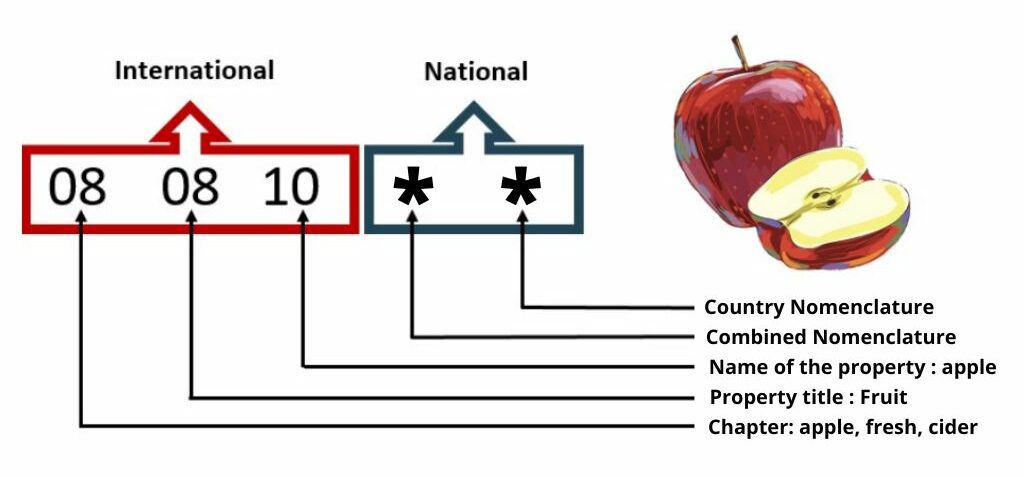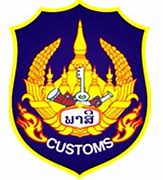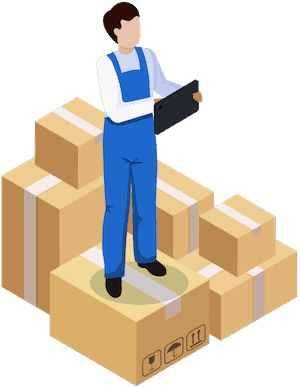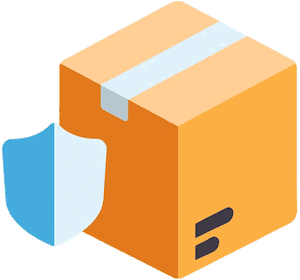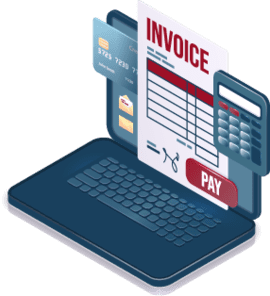Crossing the South China Sea with a container ship isn't the most relaxing cruise trip, but it's often the reality when shipping between Malaysia and Laos. This guide understands the common headaches related to rates, transit times, and stark customs regulations. We aim to bring you clarity and confidence in this cloud of complexities. You can expect comprehensive insights into diverse freight options, whether it be air, sea, road, or rail. We'll cover everything from how customs clearance works in both countries to explaining duties and taxes, all with business needs at the forefront. If the process still feels overwhelming, let DocShipper handle it for you! As a dedicated international freight forwarder, we make sure every step of your shipping journey is taken care of, turning your potential challenges into palpable success.
Table of Contents
Which are the different modes of transportation between Malaysia and Laos?
Picture Malaysia and Laos, with their shared borders and convenient proximity. Choosing the best transportation method between these neighbors isn't as straightforward as you might think. Sure, their closeness favors road transport, but your specific shipping needs, be it speed or cost, could set the compass towards air or sea freight too. Imagine selecting the right vehicle for a vacation trip; your choice hinges on whether you're carrying a couple of suitcases or a family with camping gear! Keep reading as we unpack how to smartly choose the most suitable conveyance for your package's journey, ensuring it arrives safe, sound, and timely.
How can DocShipper help?
Shipping goods between Malaysia and Laos? DocShipper simplifies the task! Our team manages all procedures, from transport organization to customs clearance. Say goodbye to complex logistics issues. Reach out and secure a free estimate in 24 hours. Need to chat? Ring our consultants at absolutely no cost. Your shipping solution is just a call away!
DocShipper Tip: Sea freight might be the best solution for you if:
- You're dealing with hefty quantities or oversized goods. Sea transport is your go-to for maximizing space without stretching your budget.
- Time sensitivity isn't a concern for your shipment. Ocean freight is known for its leisurely pace, especially when compared to the speed of air or rail.
- Your supply chain connects key international harbors. This positions you to take full advantage of a wide-reaching network of ocean trade routes.
Sea freight between Malaysia and Laos
The powerful trade tide between Malaysia and Laos flows steadily, with oceanic routes offering a lifeline for the swarm of goods exchanged. Levitating amidst the serene South China Sea, the cargo ports of Kuantan, Malaysia and Vung Ang, Laos like clockwork, connect the economic pulse of these thriving industrial hubs. The slow rhythm of sea freight becomes music to the ears of those dealing in high-volume goods, the balance between time and cost tipping favorably in their direction.
Yet, the voyage isn't all smooth sailing. The sometimes murky waters of customs clearance and shipping regulations between these Asian havens can send even seasoned shippers and businesses adrift into a sea of confusion and errors. Fear not! Anchoring on the firm ground of best practices and specifications can guide you back on course. On this journey, we'll uncover and tackle each wave of challenge, turning fretful frowns into confident nods. Here's your compass to a smoother, smarter shipping experience.
Main shipping ports in Malaysia
Location and Volume: Situated along the Straits of Malacca, one of the world's most important shipping channels, Port Klang is Malaysia's busiest port. With a shipping volume of approximately 13.2 million TEU in 2019, it is a crucial hub in international trade routes.
Key Trading Partners and Strategic Importance: Port Klang's strategic location has fostered strong trading partnerships with countries like China, Singapore, Indonesia, Thailand, and Australia. The port is also a key transshipment hub in Southeast Asia, supported by an extensive network of 120 shipping lines and links to more than 200 ports worldwide.
Context for Businesses: If your business strategy involves tapping into markets in Southeast Asia and beyond, Port Klang's extensive connectivity can significantly streamline your supply chain operations. Its high-volume capacity ensures efficient handling of various types of cargo, making it a reliable choice for businesses.
Location and Volume: Positioned in the southwest of Johor, Malaysia, the Port of Tanjung Pelepas is the country's second-busiest port. Handling over 9.1 million TEU in 2019, this port's prominence is steadily rising in the international trading scene.
Key Trading Partners and Strategic Importance: The port has created lucrative partnerships with countries like China, Singapore, and the USA. Notably, it's also the primary port for major shipping lines, including Maersk, the world's largest container shipping company.
Context for Businesses: For companies planning to transport substantial quantities of goods quickly, the Port of Tanjung Pelepas is an excellent choice. Its strategic location and status as Maersk's primary Southeast Asian port can give businesses an edge in international shipping efficiency.
Location and Volume: Located on the northwest coast of Peninsular Malaysia, the Port of Penang is well-equipped to handle over 1.7 million TEU annually.
Key Trading Partners and Strategic Importance: The port enjoys strong ties with countries like China, Singapore, and the USA. Penang Port also plays a pivotal role in Northern Malaysia's socioeconomic development, being connected to various industrial zones.
Context for Businesses: If your business caters to the Northern Malaysia market or require frequent cargo transfers, the Port of Penang, with its varied cargo handling facilities, can simplify your logistics processes.
Location and Volume: In the central region of Sarawak, you'll find the Port of Bintulu, a sole specialized port in Malaysia, managing close to 60 million metric tonnes of merchandise per year.
Key Trading Partners and Strategic Importance: Bintulu Port has been instrumental in handling exports for partners such as Japan, Korea, and China. It is also notable for being the world's largest liquefied natural gas (LNG) production facility.
Context for Businesses: For companies dealing with petrochemicals and LNG, the Port of Bintulu offers specialized facilities unmatched by other ports. This port could be crucial in expediting your LNG and petrochemicals shipping processes.
Location and Volume: The Port of Johor, at the southern end of the Malay Peninsula, handles around 1 million TEU annually.
Key Trading Partners and Strategic Importance: The port has significant trading relationships with neighboring Singapore, Thailand, and further afield with China. Johor Port is also unique for being Malaysia's first multipurpose port.
Context for Businesses: If your business involves a variety of cargo types, from bulk to break bulk, the diversity of services offered by the Port of Johor can simplify your shipping processes.
Location and Volume: The Port of Kota Kinabalu, in eastern Malaysia, is smaller than the other listed ports but remains a vital gateway, handling over 350,000 TEU annually.
Key Trading Partners and Strategic Importance: Key partnerships include regional trade with Brunei, Indonesia, and the Philippines. The port is also essential in supporting the growth of Eastern Malaysia.
Context for Businesses: If your business operations focus on the Southeast Asian markets, particularly Borneo Island and surrounding regions, the Port of Kota Kinabalu's strategic location might suit your shipping strategy well.
Main shipping ports in Laos
Location and Volume: The Port of Vientiane, Laos's only international sea port, is strategically located in the capital city, Vientiane. This inland port is vital for facilitating trade with neighboring countries, handling a shipping volume of approximately 50,000 TEU annually.
Key Trading Partners and Strategic Importance: The port's key trading partners include Thailand, Vietnam, and China. As Laos is a landlocked country, the Port of Vientiane's strategic importance cannot be overstated; it is the primary international gateway for the country's import and export activities.
Context for Businesses: If you're looking to expand your business operations in Southeast Asia, especially in Laos and its neighboring countries, the Port of Vientiane should factor into your logistics planning. Its strategic location makes it advantageous for businesses to reach various ASEAN markets effectively.
Should I choose FCL or LCL when shipping between Malaysia and Laos?
Looking to ship goods between Malaysia and Laos through sea freight? Deciding between Full Container Load (FCL) and Less than Container Load (LCL), or consolidation, is a pivotal strategic choice. Your decision can significantly affect the cost, delivery time, and overall success of your shipment. This section will illuminate the unique features of both options, empowering you to make an informed choice that aligns precisely with your business needs. Our goal? Smoother sailing for your global supply chain. Dig in to discover how each method might be just the right fit for your next shipment.
LCL: Less than Container Load
Definition: LCL (Less than Container Load) freight, also known as consolidation, is the shipping of smaller quantities of cargo that doesn't fill an entire container. It involves combining multiple shipments from different shippers into one container.
When to Use: This option is ideal when your cargo volume is less than 13/14/15 CBM. It's preferred for its price advantage and flexibility for smaller loads.
Example: Suppose you're a retailer in Laos importing specialty spices from Malaysia, and you only need around 10 CBM. Instead of booking an entire container, using LCL shipment could be a cost-effective solution as it allows sharing of container space with other businesses.
Cost Implications: Because you only pay for the space you use, the cost of LCL freight is usually lower for smaller volumes compared to booking a full container. However, it's important to note that LCL might involve additional handling fees due to the consolidation and deconsolidation processes. Therefore, always request an LCL shipping quote from your freight forwarder to assess total costs.
FCL: Full Container Load
Definition: FCL (Full Container Load) or FCL shipping is an approach in which a single shipper reserves use of an entire container, usually a 20'ft or 40'ft container.
When to Use: Opt for FCL if your cargo exceeds 13-15 cubic meters (CBM). Beyond this volume, FCL offers cost benefits. It also enhances safety because the fcl container is sealed at the origin and remains so until the destination.
Example: Let's imagine you're exporting furniture from Malaysia to Laos. If you're shipping 16CBM of furniture (roughly a 20'ft container), FCL would be ideal because of high volume and the protection of your valuable goods, which are safe within a dedicated container.
Cost Implications: The FCL shipping quote often becomes cheaper than LCL when dealing with larger volumes because you pay for the whole container, irrespective of whether it's fully filled or not. Do note that shipping larger FCL containers (40'ft compared to 20'ft) may offer better volume-to-cost ratios, but it becomes economical only if your cargo is sufficient to fill it.
Unlock hassle-free shipping
Shipping from Malaysia to Laos? Let DocShipper simplify the procedure for you. As a tenured freight forwarder, our aim is to transform cargo shipping into a hassle-free process. Our ocean freight specialists tailor solutions based on the size of the consignment, the type and value of goods, and time constraints. If you're unsure whether to opt for consolidation or a full container, we're here to assist. Reach out to us for a free, no-obligation estimate today. Let's make your shipping experience smoother together.
How long does sea freight take between Malaysia and Laos?
Typically, sea freight transit times between Malaysia and Laos can range from 5 to 15 days. These estimates are influenced by several elements such as the exact ports being used for pickup and delivery, the weight of the shipment, and the nature of the goods being shipped. It's important to consider these factors when planning your shipment timeline. For a personalized and precise quote, reaching out to an experienced freight forwarder like DocShipper is recommended.
Here's a brief table showcasing average transit times between the main freight ports in both countries:
| Port in Malaysia | Port in Laos | Average Transit Time (Days) |
| Port Klang | Vientiane | 14 |
| Tanjung Pelepas | Vientiane | 4 |
| Penang | Vientiane | 12 |
| Kuantan | Vientiane | 14 |
*Please note, Laos being a landlocked country has no seaport of its own, so all sea freight is received in Vientiane through other regional ports. The times listed above are estimates and can vary, contact DocShipper for exact schedules and rates.
How much does it cost to ship a container between Malaysia and Laos?
Understanding the cost to ship a container between Malaysia and Laos starts by grasping ocean freight rates and overall shipping cost, which can show tremendous variety. Prices may swing within a broad range per cubic meter (CBM) due to influential factors such as the Point of Loading, Point of Destination, your chosen carrier, the nature of goods being shipped, and the pulse of monthly market fluctuations. Pinpointing an exact cost upfront isn't feasible, but fear not! Our shipping specialists thrive on these variables, diligently working to provide you with the most favorable rates. Each quote we provide is meticulously tailored to your specific case, ensuring a cost-effective and efficient shipping experience.
Special transportation services
Out of Gauge (OOG) Container
Definition: An OOG container, short for Out of Gauge, is designed for items that exceed the dimensions of standard freight containers. They're particularly useful for oversized, heavy goods that don't fit into the standard container sizes.
Suitable for: Out of gauge cargo like bulky machinery, industrial equipment or large vehicles.
Examples: Construction equipment, agricultural machinery, or heavy-duty vehicles.
Why it might be the best choice for you: If your business ships large, heavy items from Malaysia to Laos that don't fit into standard containers, an OOG container could be your optimal solution, ensuring safety and efficiency.
Break Bulk
Definition: Break bulk refers to goods that need to be loaded individually onto the vessel, rather than in a container. This shipping method is ideal for large items that cannot be dismantled.
Suitable for: Outsized items or equipment that can't be disassembled or loaded into containers due to their size.
Examples: Wind turbine blades, yachts, or cranes.
Why it might be the best choice for you: If you often send large pieces of machinery or construction materials that can't be containerized, break bulk shipping could be the best fit for your business needs.
Dry Bulk
Definition: Dry bulk shipping involves transporting unpackaged goods in large quantities. They are typically loaded in a loose cargo load state and transported in the vessel's hold.
Suitable for: Commodities like minerals, grains, coal, or sand.
Examples: Bulk quantities of coal, cereals, or raw minerals.
Why it might be the best choice for you: If your business trades high volumes of bulk commodities to Laos, dry bulk shipping could be your go-to choice for its cost-effectiveness and efficiency.
Roll-on/Roll-off (Ro-Ro)
Definition: Roll-on/Roll-off shipping involves loading wheeled cargo onto a ro-ro vessel that has built-in ramps. The cargo gets rolled on and rolled off, hence the name.
Suitable for: Any rolling assets like cars, trucks, trailers, or machinery on wheels.
Examples: New or used vehicles, construction equipment on wheels, or mobile cranes.
Why it might be the best choice for you: If you're a car dealer or sell large machinery on wheels, Ro-Ro shipping option could be an excellent fit due to its ease of loading and unloading.
Reefer Containers
Definition: Reefer containers are refrigerated shipping containers designed for transporting goods that require specific temperature control, allowing items to remain fresh or frozen during transits.
Suitable for: Perishable goods like fruits, vegetables, dairy products, or pharmaceuticals.
Examples: Transporting prawns from Malaysia or a shipment of lifesaving drugs.
Why it might be the best choice for you: If your business involves shipping perishable items or temperature-sensitive pharmaceuticals, using reefer containers can ensure your goods arrive in Laos in optimal condition.
No matter your shipping needs, DocShipper has you covered. Contact us for a free shipping quote within 24 hours. Let's ship smarter, together.
DocShipper Tip: Air freight might be the best solution for you if:
- You're pressed for time or facing a non-negotiable deadline. Air freight delivers unparalleled speed when it comes to transit times.
- Your shipment is modest in size, falling under 2 CBM. Air freight is particularly well-suited for these smaller consignments.
- Your supply chain includes destinations that are off the beaten maritime or rail paths. Air freight gives you access to a comprehensive global airport network.
Air freight between Malaysia and Laos
When shipping goods between Malaysia and Laos, the swiftness and trustworthiness of air freight come to the fore, making it an ideal choice for small, high-value consignments. Picture sending microchips or medicines – air freight ensures their rapid and safe arrival. It's like entrusting your precious family heirloom to a trustworthy friend who always delivers promptly.
However, here lies a peril often overlooked by shippers – the process is nowhere near as simple as handing off an heirloom. Missteps can be costly, especially when it's about the fine-print details like correctly estimating the price based on weight. Imagine ordering a king-sized burger and getting billed for a giant-sized one instead! Similarly, not knowing practices like optimal packaging can lead to ballooned invoices. Join us in this guide where we 'unpack' these complexities to ensure you're on the winning side.
Air Cargo vs Express Air Freight: How should I ship?
When expanding your business horizons from Malaysia to Laos, two swift air options come into play - Air Cargo and Express Air Freight. Picture Air Cargo as booking a seat for your goods on a regular flight, and Express Air Freight as chartering the entire plane, ensuring fastest delivery - what's best suited for your business needs? Stay tuned as we delve into the pros and cons of both.
Should I choose Air Cargo between Malaysia and Laos?
Air cargo offers reliability and cost-effectiveness for Malaysia-Laos shipments, especially beneficial for weights over 100/150kg. Airlines like Malaysia Airlines and Lao Airlines facilitate freight services regionally. However, anticipate longer transit times due to scheduled flights. Remember, your shipping mode depends on your budget and timeline. Initiating air transport might be an optimal choice for your business needs.
Should I choose Express Air Freight between Malaysia and Laos?
Express air freight, a service using dedicated cargo planes without passengers, is ideal for shipping under 1 CBM or 100/150 kg (220/330 lbs) of cargo. Perfect for swift deliveries, this method is often employed by international courier firms like FedEx, UPS, and DHL. If your business needs to move smaller cargo quickly between Malaysia and Laos, this option can be a game-changer. The speed of express air freight might make all the difference in meeting your deadlines, reducing your warehouse needs, and increasing customer satisfaction. Confirm your choice by comparing the cost, delivery time, and nature of goods against other shipping methods.
Main international airports in Malaysia
Kuala Lumpur International Airport (KLIA)
Cargo Volume: Handled over 726,230 metric tons of cargo in 2020 alone.
Key Trading Partners: China, USA, India, Japan, Singapore.
Strategic Importance: KLIA serves as the main international gateway to Malaysia and Southeast Asia. It's well-connected to major global cities and regional hubs, making it strategically vital.
Notable Features: The airport offers robust cargo facilities, boasting a Free Commercial Zone (FCZ) for transshipment cargo and a strong network across Asia.
For Your Business: If you trade with Asian countries, KLIA can be ideal. The FCZ may let you avoid certain tariff restrictions, offering interested businesses a streamlined process.
Penang International Airport (PEN)
Cargo Volume: Handles over 300,000 metric tons annually, and is the country’s second busiest airport in terms of cargo traffic.
Key Trading Partners: China, USA, Singapore, Japan, Hong Kong.
Strategic Importance: A crucial gateway to the northern part of Malaysia, the airport's proximity to manufacturing industries makes it an asset for freight shipping.
Notable Features: PEN has a dedicated cargo complex, express cargo terminal, and onsite courier services.
For Your Business: Its strong links with international hubs and nearness to manufacturing industries can aid in the efficient shipment of your goods.
Sultan Abdul Aziz Shah Airport (SZB)
Cargo Volume: While it routes less cargo than KLIA or PEN, it still serves important niche markets.
Key Trading Partners: Primarily domestic routes but maintains international connections with several Southeast Asian countries.
Strategic Importance: Located in Subang, it primarily serves regional flights, complementing the country's larger transport hubs.
Notable Features: It supports freight forwarding, charter services, and helicopter services, making it a versatile option.
For Your Business: It's especially valuable if you have domestic shipping needs or trade with Southeast Asian partners.
Senai International Airport (JHB)
Cargo Volume: Handled 10,800 metric tons in 2019 and has the capacity to handle more.
Key Trading Partners: Domestic and regional mainly, with global avenues via connections in Kuala Lumpur and Singapore.
Strategic Importance: Located in Johor, it's a crucial part of the thriving southern economic region of Malaysia.
Notable Features: It offers cargo warehousing, ground handling, and cool chain facilities, catering to various logistical requirements.
For Your Business: With congestion often lesser than larger hubs and supportive infrastructure, JHB can help reduce shipment times and aid perishable goods shipping.
Kota Kinabalu International Airport (BKI)
Cargo Volume: While smaller compared to KLIA and PEN, it caters to critical routes in Eastern Malaysia and Borneo.
Key Trading Partners: Primarily caters to domestic traffic with some routes to China, South Korea, and Taiwan.
Strategic Importance: It's the second busiest airport in Malaysia, acting as a vital link for the cargo transportation in East Malaysia and Borneo.
Notable Features: It accommodates both domestic and some international cargo, aiding businesses serving diverse markets.
For Your Business: Its strategic location in the East can offer a significant advantage if your business requires reach in these regions.
Main international airports in Laos
Wattay International Airport
Cargo Volume: Wattay airport handles over 15,000 tons of cargo annually, playing a substantial role in the Laos freight landscape.
Key Trading Partners: The main trading partners are neighboring countries like Thailand, Vietnam, and China as well as international partners such as South Korea and Japan.
Strategic Importance: This airport is strategically situated in the capital city Vientiane, making it a key hub for both domestic and international flights.
Notable Features: It boasts modern amenities following renovations in 2018, and has designated cargo terminals that ensure efficient freight processing.
For Your Business: With its strategic location, significant cargo volume, and efficient freight handling facilities, Wattay International Airport can effectively serve as an entry point or exit for your goods in Laos, connecting your business with key trading partners in Southeast Asia.
Luang Prabang International Airport
Cargo Volume: As one of the smaller international airports, Luang Prabang handles less volume compared to Wattay, but still contributes to the Laos air freight industry.
Key Trading Partners: Much like Wattay, it engages with Thailand, Vietnam, China, South Korea, and Japan.
Strategic Importance: This airport is essential for reaching the northern areas of Laos and can play a role in your supply chain if your business spans this region.
Notable Features: Its recent renovations resulted in modernized infrastructure and a commitment to becoming a prominent player in Laos' cargo services.
For Your Business: If your business involves shipping goods to northern parts of Laos, Luang Prabang International Airport is your go-to option, providing essential air cargo services and access to leading Asian marketplaces.
How long does air freight take between Malaysia and Laos?
Shipping between Malaysia and Laos by air freight typically takes around 1-3 days. However, the specific transit time can vary based on factors such as the departure and arrival airports, the weight of the shipment, and the nature of the goods. To get an accurate timeline for your unique needs, it's best to consult a trusted freight forwarder like DocShipper.
How much does it cost to ship a parcel between Malaysia and Laos with air freight?
Air freight shipping rates between Malaysia and Laos generally range from $2.50 to $10 per kg. Pinpointing an exact cost can be a challenge due to factors like distance between departure/arrival airports, parcel dimensions, weight, and type of goods. Nevertheless, rest assured that we're committed to delivering personalized and competitive quotes refined to the specifics of your shipment. We'll work closely with you, ensuring we meet your unique logistics needs, and you'll receive your free quote in less than 24 hours. Contact us today!
What is the difference between volumetric and gross weight?
Gross weight is the actual weight of a shipment, including the goods and the shipping container. Volumetric weight, also known as dimensional weight, is a calculated weight based on the space the package occupies in transport.
For air cargo services, volumetric weight is calculated by taking the dimensions of the shipment (length, width, and height in centimeters) and dividing it by the standard factor used in air freight, which is 6000. A shipment with dimensions of 50cm x 50cm x 50cm would give a volumetric weight of 41.7kg. In lbs, this is roughly 92 lbs.
Gross weight simply refers to the actual weight of the goods plus packaging. If the same shipment weighs 35kg, or 77 lbs, this would be the gross weight.
Express Air Freight uses a similar calculation for volumetric weight but divides by a different factor, typically 5000. Using the same shipment dimensions, the calculation is 50cm x 50cm x 50cm / 5000, giving a volumetric weight of 50kg, or 110 lbs.
These calculations are key to determining freight charges. Airlines charge based on either the gross weight or volumetric weight, depending on which is higher. Therefore, a light but bulky shipment can cost more to ship due to its high volumetric weight. This enables airlines to maintain profitability and effective space utilization in air transport.
DocShipper tip: Door to Door might be the best solution for you if:
- You value convenience and want a seamless shipping process, as door-to-door takes care of every step from pickup to delivery.
- You prefer a single point of contact, as door-to-door services typically provide a dedicated agent to handle all aspects of the shipment.
- You want to minimize the handling of your goods, reducing the risk of damage or loss, as door-to-door minimizes transitions between different modes of transport.
Door to door between Malaysia and Laos
International door-to-door shipping, simply put, it's your all-in-one logistics solution from Malaysia to Laos. Say goodbye to the hassle of managing multiple carriers and hello to a smooth, streamlined process. With benefits like increased convenience, better cost control, and security, it's a superb option. So, ready to simplify your shipping process? Let's dive in!
Overview – Door to Door
Let's face it - shipping goods from Malaysia to Laos can tie you up in knots! With complex customs procedures and transport coordination, it's no walk in the park. That's where Door to Door shipping steps in. Offering a hassle-free, all-inclusive service, this solution tackles the labyrinth of logistics for you. It arranges everything from pick-up to delivery, letting you bid goodbye to paperwork and hello to convenience. While more expensive, its high demand among DocShipper's clients testifies to its value. Trust us, surrendering the wheel to a full-service logistics provider is a boon! Remember, peace of mind is priceless.
Why should I use a Door to Door service between Malaysia and Laos?
Ever felt like juggling a porcupine would be simpler than dealing with the complexities of international shipping? Well, a Door to Door service between Malaysia and Laos may just be the gentle respite you need.
1. Stress Buster: Let's face it; international shipping can get overwhelming. With this service, your goods are picked up from your designated location in Malaysia, and wedding-ring-level care is provided until they see the placard of Laos. It chews up the logistics headache, so you're left with more time to juggle other business challenges (or porcupines!).
2. Clockwork Precision: Urgent shipments amplify the shipping horror, doesn't it? These services are seasoned in delivering timely results, making sure your goods act like punctual employees showing up at their Laos destinations just when needed.
3. Caring for the Complicated: Regular cargo worrying you? Imagine the distress when the cargo gets complex! Thankfully, Door to Door services give your items the same TLC as a protective mom would to her newborn, ensuring safe and secure shipping.
4. Trucking Trooper: Even once your goods touch the Laotian soil, the service doesn't abandon its commitment. It takes up the task of trucking until the goods arrive at their final location. You'll find your items delivered right at your doorstep - Isn't that a refreshing end to an exhausting voyage?
5. Unbeatable Convenience: All of this rolled into one service screams convenience. You're practically spared of any shipping duties while simultaneously assured of the safety, timeliness, and successful delivery of your items. It's like hiring a superhero for your logistical battles.
Simply put, Door to Door services between Malaysia and Laos is less about moving cargo and more about moving convenience, care, and assured delivery straight to where you need them the most.
DocShipper – Door to Door specialist between Malaysia and Laos
Experience hassle-free, door-to-door shipping between Malaysia and Laos with DocShipper. Our team of skilled logistics professionals take care of every step - from packing to transportation, customs clearance, and delivery using all possible shipping methods. You won't have to lift a finger! Plus, you'll have the personal assistance of a dedicated Account Executive for all your queries. Reach out for a free estimate within 24 hours or consult with our experts at no cost. Trust in our proficiency to make your international shipping experience smooth and effortless.
Customs clearance in Laos for goods imported from Malaysia
Customs clearance refers to the official process where goods inbound to a country are checked against the country's import regulations. In Laos, importing goods from Malaysia can be complex, full of potential pitfalls such as unexpected fees and charges. It's crucial to navigate detailed aspects like customs duties, taxes, quotas, and licenses to avoid costly delays with goods stuck in customs. No worries - subsequent sections in this guide will help you decode this complexity. Plus, DocShipper is always ready to step in. We assist with the entire process for any kinds of goods anywhere on the globe, ensuring a hassle-free journey for your shipment. Want to budget your project? Get in touch with us, providing the origin of your goods, their value, and the HS Code, to obtain an estimate. Remember, these three elements are mandatory for further estimations. Let's get started!
How to calculate duties & taxes when importing from Malaysia to Laos?
Understanding how to calculate duties and taxes is a crucial step when importing from Malaysia to Laos. Knowledge about the country of origin, the Harmonized System (HS) Code associated with your goods, the Customs value, the Applicable Tariff Rate, and any additional taxes or fees is important to ensure an accurate estimate. It's a complex process but we'll help you decode it, because there's nothing more satisfying than being prepared and foresighted.
Your first port-of-call is to identify the country where your goods were manufactured or produced. This country of origin is paramount to calculating customs duties and gives your task a concrete starting point. Once this is clear, the other information can be methodically worked in. Trust us, it's less daunting than it sounds!
Step 1 - Identify the Country of Origin
Knowing the product's country of origin, in this case, Malaysia, is your first move towards smoother duties and taxes estimation. Not just an address on a map, the country of origin could influence:
1. Tariff levels - Trade agreements between Malaysia and Laos may entitle goods to specific lower duty rates.
2. Customs rules - There might be unique customs practices and regulations according to the country of origin.
3. Import restrictions - Certain goods might have restrictions or outright bans, so knowing your origin prevents non-compliance.
4. Trade embargos - These can halt certain imports and exports between countries.
5. Free Trade Zones - Some goods might be exempt from duties under certain conditions.
For Malaysia and Laos, the ASEAN Trade in Goods Agreement (ATIGA), reduces and eliminates tariffs on goods traded between the two countries.
Always cross-verify your goods against any possible restrictions. Example: Some types of wood products might not receive clearance due to environmental regulations.
The right start, with precise knowledge of the country of origin, gives you a proactive edge. It keeps you clear of possible logistical roadblocks and unexpected costs. A pro tip: Keep a thorough product record for less hassle at the customs gate!
Step 2 - Find the HS Code of your product
The Harmonized System (HS) Code is an internationally standardized system of names and numbers that classifies traded products. It's used by customs authorities worldwide to identify goods for tax, quota, and statistical reports. The HS Code of a product is crucial for the proper documentation and successful shipping of your goods.
Since your supplier is well-acquainted with the products they utilize, they are typically the best resource for obtaining the correct HS Code. Don't hesitate to reach out to them for this information.
If that avenue isn't accessible, there are still steps you can take to find the correct code for your product. An effortless way is by using an HS lookup tool, like the Harmonized Tariff Schedule. Simply input the name of your product in the search bar and look in the Heading/Subheading column for the HS Code.
Note: Accuracy is paramount when selecting the HS Code for your goods. Using an incorrect code can result in shipping delays and potentially hefty fines due to non-compliance with customs regulations. So, take the time to ensure you have the right code for your product.
Here's an infographic showing you how to read an HS code.
Step 3 - Calculate the Customs Value
When it comes to importing goods from Malaysia to Laos, it can be easy to confuse the customs value with the product's price. While the latter refers to what you paid for the item, customs value follows the CIF (Cost, Insurance, and Freight) model: it's the total of the product cost, international shipping fees, and insurance cost, all recorded in USD.
For instance, if you bought a product for $100, paid an additional $30 for shipping, and say, $10 for insurance, your customs value would be $140, not the $100 you paid for the product on its own. This CIF value is what the Laotian customs authorities use to determine the import duties and taxes. So, getting it right is vital to avoid any unforeseen expenses or delays.
Step 4 - Figure out the applicable Import Tariff
An import tariff is a tax imposed on goods crossing international borders. In this case, we're referring to goods imported from Malaysia to Laos, and the specific type of tariff applied in Laos.
Your first step to identifying the applicable import tariff will be to secure the Harmonization System (HS) code of your product. Let's use a simple product - an LED light bulb, with HS Code 853950.
To illustrate how import duties are calculated, let's designate a CIF (Cost, Insurance, Freight) value of $10,000 as an example. In Laos, the general tariff rate for LED light bulbs (HS Code 853950) might be 5%.
This means your import duty will be 5% of the CIF value, thus $10,000 x 5% = $500. So, besides the original cost of your goods and the CIF costs, you have to account for the import tariff duties when calculating your total import costs.
Remember, accurate HS code classification, CIF cost calculation, and recognition of the applicable tariff rate are essential steps in customs clearance, making sure your journey through Laos's customs is as smooth as possible.
Step 5 - Consider other Import Duties and Taxes
When importing goods from Malaysia to Laos, standard tariffs are not the only customs duties you'll encounter. Various other taxes might apply depending on the country of origin and the product type.
Consider an excise duty, typically levied on specific goods like tobacco or alcohol. Anti-dumping taxes may come into play if a product is priced below fair market value in the home country to stifle local competition.
Lastly, Value Added Tax (VAT) - Laos has a standard VAT rate of 10%, which applies to the CIF value (Cost, Insurance, Freight) plus any import duties. For instance, if you're importing goods valued at $1000 with a 10% import duty, your VAT is calculated as: VAT = 10% x ($1000 + $100 = $1100) = $110.
Remember, these examples provide an approximation and actual rates might vary. It's essential to understand these parameters to avoid unexpected costs and to ensure smooth import procedures.
Step 6 - Calculate the Customs Duties
In calculating the customs duties for goods imported from Malaysia to Laos, numerous variables come into play. The main components are the customs value, VAT, and sometimes anti-dumping taxes or Excise Duty.
Take a shipment worth $1000 with no VAT but a customs duty of 5%. You would pay $50 in customs duties ($1000 0.05 = $50).
Now, consider another shipment, also worth $1000, but this time with a customs duty of 5% and a VAT of 7%. You'd initially calculate the customs duty, yielding $50. Then, add this to the shipment's value and multiply by VAT: ($1000 + $50) 0.07 = $73.50. Total customs duties and VAT then comes to $123.50.
Lastly, think about a shipment valued at $1000 with a customs duty of 5%, a VAT of 7%, an anti-dumping tax of 3%, and an Excise Duty of 2%. Start with your customs duty ($50). Follow this with the VAT calculation ($73.50). Add the anti-dumping tax ($30) and the Excise Duty ($20). This sums to a total charge of $173.50.
But remember, parsing these costs can be a headache. Let DocShipper handle every step of your customs clearance worldwide. Our team ensures you don't overpay and provide free quotes in less than 24h. Let us translate the language of global trade for you!
Does DocShipper charge customs fees?
Navigating the customs landscape can be tricky, especially distinguishing between customs clearance fees and actual customs duties. As your customs broker in Malaysia and Laos, DocShipper charges for the 'clearance' service—preparing and submitting essential customs documents but we don't collect any customs duties. These duties and taxes are directly owed to the government. To avoid confusion, we ensure transparency by providing the documents produced by the customs office as proof of exactly what you've paid, cutting through jargon and eliminating unwelcome surprises.
Contact Details for Customs Authorities
Malaysia Customs
Official name: Royal Malaysian Customs Department
Official website: https://www.customs.gov.my/
Required documents for customs clearance
Sorting out paperwork for customs can be daunting. This section deciphers the jargon, offering clarity on key documents like the Bill of Lading, Packing List, Certificate of Origin, and CE standard conformity documents. You'll learn what each document is, why it's necessary, and how to prepare them to avoid snags during customs clearance.
Bill of Lading
A Bill of Lading (BoL) holds great importance for your Malaysia-Laos shipments. Not just a receipt, it's a legally binding document transferring ownership of goods from you to your buyer or consignee. With BoL in their hands, they own the goods, even mid-shipment on the South China Sea. Opting for an electronic ('telex') release further smooths this process - accessible anywhere, faster and more environmentally friendly. Now, if you're flying your goods, an Air Waybill (AWB) is your ticket. It's very similar to a BoL but for air cargo. Remember, safeguard these documents like treasure maps - they literally point the way to your valuable cargo.
Packing List
Navigating the shipping journey from Malaysia to Laos? Of paramount importance is your Packing List. Think of it as your shipment's passport, detailing what's being transported. This list should be crystal clear, giving details about the quantity, nature, and weight of each item. Whether it's 500 ceramic pots or 50 flat-screen TVs, each item should be meticulously listed. When it comes to sea or air freight, authorities on both ends are keen to avoid contraband and dutifully enforce import and export controls. An accurate Packing List not only expedites customs clearance but also prevents costly shipping delays. Aligning your shipment with this prerequisite can, quite literally, make or break your venture into Laos' thriving market.
Commercial Invoice
A Commercial Invoice, essential in shipping between Malaysia and Laos, validates the value of your shipped goods. This document itemizes the products, respective quantities, and trade price. To sail smoothly through customs clearance, details must match those declared on other shipping documents like the Bill of Lading. So, if you're shipping 500 coffee mugs, your Commercial Invoice should mirror this. Discrepancies can lead to delays, fines, or seizure of goods. Understand the industry code for your goods; list it accurately and note any exemptions. For instance, commodities with ASEAN Harmonized Tariff Nomenclature (AHTN) codes enjoy reduced or zero customs duty. Review your invoice details; they're more than just administrative formalities but form the cornerstone of your cross-border business.
Certificate of Origin
Navigating the logistics between Malaysia and Laos? Your shipment's Certificate of Origin (CO) is essential. This document proves where your cargo was produced, essential in calculating duties at Laos' customs, given that duties vary by product and country of origin. Say, you're shipping Malaysian manufactured car parts and have your CO in order - you might just land a favorable customs duty rate! Be careful—omitting the country of manufacture could lead to shipment delays or cost increases. So your electronics manufactured in Kuala Lumpur? Make sure that's clear on your CO. This piece of paper can ease your logistics journey, potentially saving you time and money. Keep your CO at the ready for swift and efficient shipping.
Get Started with DocShipper
Navigating customs clearance between Malaysia and Laos can be complex and time-consuming. Save yourself from headaches, paperwork piles, and unpredictable delays. With DocShipper, rest easy knowing your customs clearance is entirely handled by experts. Contact us right now, receive a personalized free quote within 24 hours, and make your shipping process seamless and stress-free. We're here to make your journey smoother.
Prohibited and Restricted items when importing into Laos
Ensuring your goods can confidently cross the Lao borders starts with knowing what’s off-limits. Accidentally including prohibited or restricted items can cause delays or hefty fees – a nightmare for any business. Let's help you avoid that hassle by understanding Laos' import regulations.
Restricted Products
- Pharmaceutical Products: You'll need to secure a pharmaceutical product import/export license from the Food and Drug Department, Ministry of Health, Laos.
- Precious Metals and Stones: To move precious metals and stones, you have to get the approval from the Ministry of Finance's Department of Customs and Tax.
- Plants and Plant Products: You have to apply for a Phytosanitary Certificate from the Ministry of Agriculture and Forestry in Laos.
- Firearms and Ammunition: An import/export license from the Ministry of Public Security in Laos is a must for transporting firearms and ammunition.
- Livestock and Animal Products: You need to obtain an Animal Health Certificate from the Department of Livestock and Fisheries, Ministry of Agriculture and Forestry in Laos.
Remember, this list is not exhaustive. Always ensure you've got the most accurate and up-to-date information on regulations before you ship. Regulations can change unexpectedly and without notice.
Prohibited products
- Narcotics and psychotropic substances
- Counterfeit currency and goods
- Endangered species of wildlife and their products
- Unlicensed arms, explosives, and ammunition
- Pornographic materials
- Radioactive materials
- All forms of hazardous waste
- Cultural artifacts and other protected objects
- Unauthorized religious materials
- Items that infringe on intellectual property rights
- Products harmful to public health and the environment.
Please bear in mind that this is not an exhaustive list and regulations may change, so it's crucial to regroup with a trustworthy Freight Forwarder or the local customs authorities for the most current restrictions and regulations.
Are there any trade agreements between Malaysia and Laos
Yes, shipping your goods between Malaysia and Laos could be influenced by the ASEAN Free Trade Area (AFTA), which both countries are party to. This agreement can lower your customs duties and streamline administrative processes. Moreover, the impending completion of the China-Laos Railway might open new logistics opportunities for businesses like yours, making it easier to move freight between these countries and the larger ASEAN region. Keep an eye on these developments to leverage potential benefits.
Malaysia - Laos trade and economic relationship
The Malaysia-Laos trade relationship dates back to 1965, establishing an economic partnership based on mutual respect and synergies. Significant milestones include Malaysia's emergence as one of Laos' largest investors, contributing to critical sectors like manufacturing, infrastructure, and tourism. Major commodities encompass timber, rubber, and electrical and electronic products. Reports show that, as of 2023, Malaysian cumulative investment in Laos was MYR 4.5 billion (USD 1.03 billion). In the same year, the total bilateral trade volume reached MYR 150 million (USD 35.2 million), reflecting the strength and vitality of this economic alliance. This strategic partnership fuels the economies of both nations, reinforcing their common goals of prosperity..
Your Next Step with DocShipper
Whether it's your first time or you're simply tired of the complex maze of custom clearance, DocShipper can help! We turn the intimidating task of shipping between Malaysia and Laos into a breezy, straightforward process. With our expertise in transport organization and administrative procedures, you can relax! Ready to make shipping stress-free? Contact us today!
Additional logistics services
In this section, discover how DocShipper streamlines your supply chain, stretching our expertise beyond shipping and customs, right to your doorstep. Efficient, professional, and designed with your needs in mind, these services bring seamless logistics solutions right to your fingertips.
Warehousing and storage
Warehousing in Malaysia and Laos can be a challenge due to necessary conditions, such as regulated temperatures for specific goods. Imagine storing delicate wines without the right climate control. That's where we come in. Learn more about our reliable solutions and tailored services that alleviate these issues and put your mind at ease. Find out more on our dedicated page: Warehousing.
Packaging and repackaging
Ensuring your goods arrive in pristine condition from Malaysia to Laos is crucial, and that's where our packaging and repackaging service shines! Whether you're shipping fragile electronics or hefty industrial equipment, we're your dedicated agent. Ever shipped a fancy vase that arrived in sherds? Ouch! We're here to avoid such mishaps. Dive deeper on our dedicated page: Freight Packaging.
Cargo insurance
When shipping, risks are omnipresent. Think transit damage, theft, or mishaps at sea. Your regular fire insurance just won't cut it. That's when Cargo Insurance is your best bet. It helps you stay prepared, come hail or high water. Let's say a sudden storm damages your precious cargo; this insurance can have you covered. Want to put your business risks overboard? Take a wise step, hop on here: Cargo Insurance for a safe voyage. More info on our dedicated page: Cargo Insurance.
Supplier Management (Sourcing)
Struggling to find reliable suppliers in Asia or East Europe? With DocShipper's Sourcing service, we take the reins, locating suppliers and managing the complete procurement cycle for you. Forget language barriers or complicated processes; we've got you covered, just like when we found Fabric Ltd. the perfect textile manufacturer in Malaysia. For a smoother procurement process, explore more on our dedicated page: Sourcing services.
Personal effects shipping
Moving between Malaysia and Laos with bulky or delicate items? Our Personal Effects Shipping service ensures they're professionally packed and handled with the highest level of care. Picture your grandmother's ornate ceramic vase or the oversized vintage music system reaching their new home, safe and sound. For this process's nitty-gritty, visit our dedicated page: Shipping Personal Belongings.
Quality Control
Keeping an eye on quality? Smart move! When shipping goods from Malaysia to Laos, quality inspections add a key layer of protection, ensuring your merchandise aligns with your specs. Think fake electronics that fail prematurely - quality control checks can stop such losses cold. It's all about maintaining your brand's integrity and customer satisfaction. Have the complete rundown at our dedicated page: Quality Inspection
Product compliance services
Product compliance can feel like navigating a minefield, especially when crossing borders. Rest easy knowing our labs test your goods to ensure they strictly comply with regulations at their destination. This prevents any unpleasant surprises and could save your shipment from being held up in customs. Whether you're shipping electronics or textiles, compliance is key. More info on our dedicated page: Product Compliance Services.
FAQ | For 1st-time importers between Malaysia and Laos
What is the necessary paperwork during shipping between Malaysia and Laos?
When shipping from Malaysia to Laos, we at DocShipper handle the issue of the bill of lading for sea freight or the air way bill for air freight. You need to provide us with the packing list and the commercial invoice. Be aware that other documents like Material Safety Data Sheets (MSDS) and certifications may be required, depending on the nature of your goods. We aim to streamline this process for you and will guide you through any additional paperwork that may arise.
Do I need a customs broker while importing in Laos?
Absolutely, when importing goods into Laos, it's highly advised utilizing the services of a customs broker. The reasons behind this recommendation stem from dealing with intricate procedures and the requirement of detailed documentation, which, if missed, could lead to unnecessary hassles. At DocShipper, we've got you covered. Our expert team is equipped to represent your cargo at customs for most shipments. By doing so, we strive to provide a smooth, efficient, and worry-free shipping experience, letting you focus on other vital aspects of your business. Working with us guarantees you professionalism, experience, and most importantly, peace of mind. This, in essence, is the value a customs broker brings to your shipment process.
Can air freight be cheaper than sea freight between Malaysia and Laos?
The cost of freight between Malaysia and Laos really hinges on multiple factors, such as the shipping route, weight, and volume of the cargo. Normally, if your goods are less than 1.5 cubic meters or weigh under 300 kg (660 lbs), we would suggest considering air freight as a viable option. We at DocShipper have a dedicated account executive who will assist in providing you with the cost-effective solution that best fits your specific needs. In every scenario, our ultimate goal is to offer you the most competitive shipping rates available.
Do I need to pay insurance while importing my goods to Laos?
While insurance isn't compulsory for shipping goods, at DocShipper, we strongly advocate for it, especially when you're importing to Laos. Accidents, misplacement, theft—anything can occur during transit. Purchasing insurance is a smart way to protect your goods and minimize your risks. Whether you're shipping via sea, air, road, or rail, having that extra layer of protection gives you peace of mind. Remember, the cost of insurance is often minuscule compared to the potential loss or damage you could incur. It's definitely worth considering.
What is the cheapest way to ship to Laos from Malaysia?
Given the short distance between Malaysia and Laos, the cheapest way to send freight is typically by road or sea transportation. Opting for a Full Truckload (FTL) or Less than Truckload (LTL) service could be economical for overland transport. With sea freight, choosing LCL (Less Container Load) could save costs. However, costs can vary based on the cargo's weight, dimensions, and specific requirements. We at DocShipper will optimize your shipments to provide the most cost-effective solution.
EXW, FOB, or CIF?
Choosing between EXW, FOB, or CIF largely depends on the relationship you have with your supplier. Even though your supplier may offer EXW (Ex Works) or FOB (Free On Board), it's essential to note they may lack professional logistic expertise. That's where we, at DocShipper, come in to streamline the process. We handle not only the international freight but also all necessary processes at the destination. Essentially, we take over the minute the goods leave the supplier's door under EXW terms or from the origin's terminal under FOB terms. Our goal is to facilitate a seamless, door-to-door shipping service for you, regardless of your terms with the supplier.
Goods have arrived at my port in Laos, how do I get them delivered to the final destination?
When your goods arrive in Laos under CIF/CFR incoterms, engaging a custom broker or freight forwarder to clear your goods at the terminal, pay import charges, and deliver to the final destination is crucial. Alternatively, we at DocShipper offer a DAP service, handling everything for you. Please consult with your dedicated account executive to clarify these details.
Does your quotation include all cost?
Indeed, our quotation encompasses all costs apart from the duties and taxes at the destination. Yet, you can request your dedicated account executive for an estimation of these additional charges. With DocShipper, we ensure utmost transparency and clarity, to desist from springing unpleasant financial surprises. Rest assured, there will be no hidden fees.
